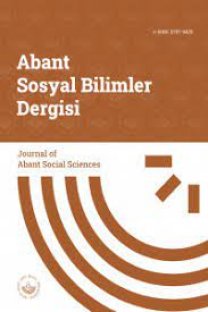Baalizmin İsraildeki İzdüşümü: Yahveizm
‘El’, Prens Denizinin arzularına teslim olmus gözükmekte, ilah kurulunun tek üyesi olarak korku nedir bilmeyen Baal’i atar. Baal, El’in tahtının yanında durmakta, satafatlı sözlerle toplantıda konusmaktadır. Yine de, Baal’i Prens Denizine kendi daimi kölesi olarak tayin eder, görünüste Baal de bu karara karsı koyacak kadar gücü yoktur. El yaratıcıdır, gökte ve yerde mesken tutmus olaganüstü etkiler yüklenilen ön yaratıcı güçlerden birisidir. Baal efsaneleri, bir tür evrenin yaradılıs kuramıdır. Asera ve Asterta ismiyle iki kız kardesi ile Anat ismindeki kızıyla üç önemli arkadası olan Baal, Anat’ı kendisine refakatçi almıstır. İlahelerin tamamı, Baal’in maiyeti arasında yer almaktadır. El’in konumu, babası oldugunu ilan ettigi ilahların ve adamların yaratılmasından önce de var oldugu düsüncesine dayanmaktadır. Kenan ve Mezopotamya diyarlarında bu ilah ve ilaheler; erkek veya kadın cinsiyetleriyle, yerin ve gögün yaratıcısı, yerdeki yaratıkların yaratıcısı, ilahe kadınlar, dünyanın ceddi veya biçimlendiricisi olarak nitelendirilmekte ve anılmaktadır. Yahve, ilahların ilahı gücündeki bir “El” suretindedir. Yahveizm de varlıgını, Baal efsanelerine borçludur. İlk siir kaynaklarında kelimelerle, savasçı ilah olarak betimlenen Yahve; bir fırtına ilahı olan Baal’in Kenan tanımlamalarını kendine mâl etmistir. İlk olarak İsrail’de, fırtına tecellisi, sık sık Yahve’nin vahiy tarzı anlamında tanımlanmıstır. Baal’in karakteristik olarak kendi kendini ifade edis tarzı da, fırtına görünüsü seklindedir.
THE PROJECTION OF BAALISM IN ISRAEL: YAHWEHISM
El appears to give in to the desires of Prince Sea, giving Ba’l is the only member of the divine council who is not cowed. He stands by El’s throne and rants at the assembly. Nevertheless Ba’l is given to Prince Sea as his ‘perpetual slave’ and apparently Ba’l has not enough power to contest the decision. El is creator, the ancient one whose extraordinary procreative powers have populated heaven and earth. Myths of El perceive creation as theogony. Myths of Ba’l view creation as cosmogony. His three important consorts are his two sisters Asherah and Astarte and his daughter Anat. Ba’l also takes Anat as consort. All goddess belonging to Ba’l’s entourage. In the case of El, the precreation of gods and men of whom he is father. Both in Canaan and in Mesopotamia the epithets of the gods describe them, male and female, as creators of heaven and earth, creatress of all creatures, gods and men, goddess and women, formers or progenitors of the world. Yahweh was an El figure. Yahwism also owes a debt to the myths of Ba’l. In the earliest poetic sources the language depicting Yahweh as divine warrior manifest is borrowed almost directly from Canaanite descriptions of the theophany of Ba’l as storm god. In early Israel, the storm theophany was a frequent means of describing Yahwe’s mode of revelation. Ba’l’s characteristic mode of self-revelation is in the storm theophany.
Keywords:
El, Yahweh, Ba’l, Old Testament,
___
- Albright W.F. (1968). Yahweh and the Gods of Canaan : A Historical Analysis of Two
- Contrasting Faiths, New York Finkelstein L. (1960). The Jews : Their History, Culture and Religion, Vol.1, New York
- Hooke S.H. (1938). The Origins of Semitic Ritual, New York
- Kadushiss M. (1956). The Rabbinic Mind, New York
- K.M. Şti. (1997). Kitabı Mukaddes Eski ve Yeni Ahit, İstanbul
- Oesterley W.O. (1930). Hebrew Religion : İt's Origin and Development , London
- Paton L.B. (1910). The Early Religion of Israel , Boston-1910
- Pritchard J.B. (1950). Ancient Near Eastern Texts relating to the Old Testament . New York
- Yayın Aralığı: 3
- Başlangıç: 2000
- Yayıncı: Abant İzzet Baysal Üniversitesi Sosyal Bilimler Enstitüsü
